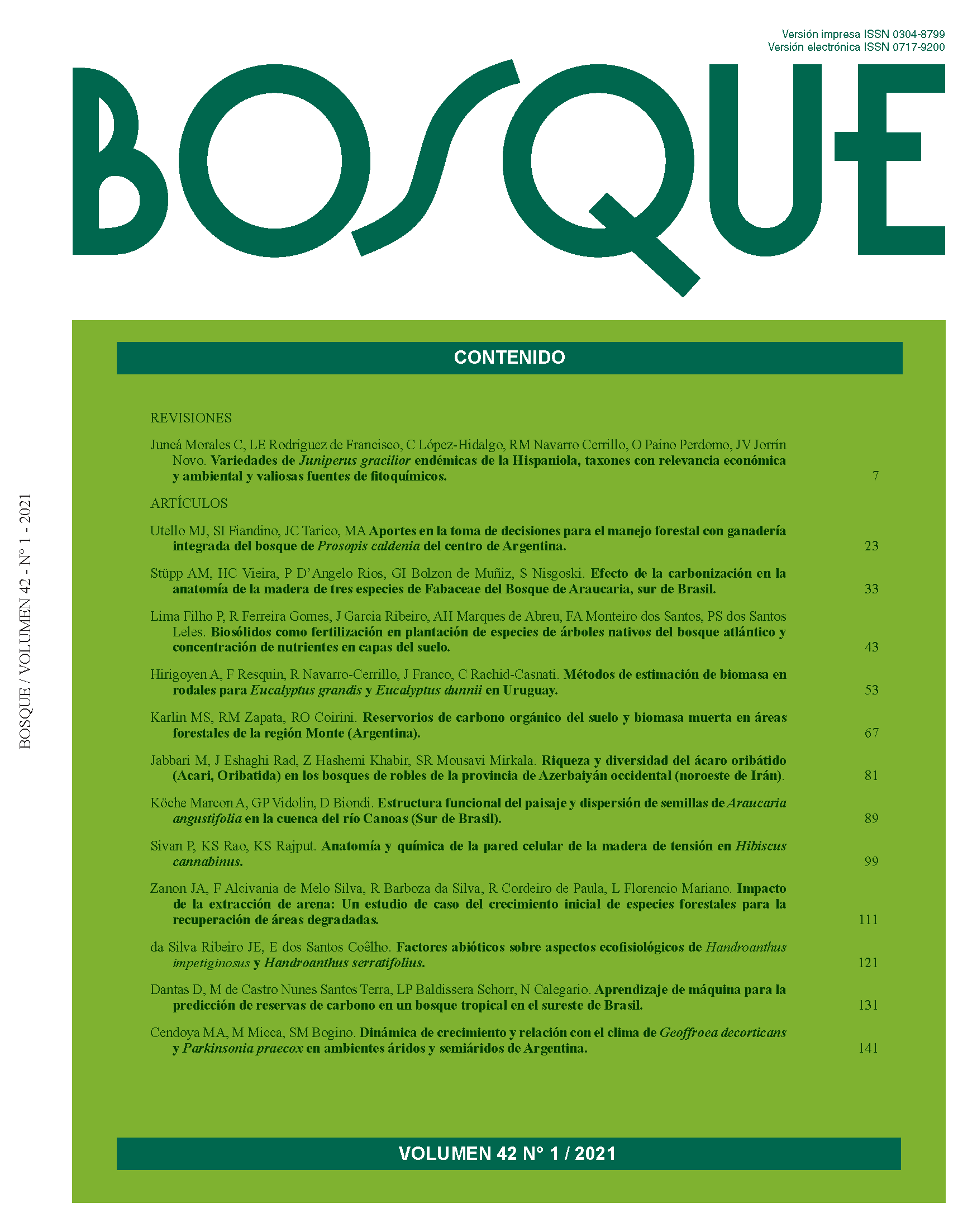Main Article Content
Mar 31, 2021
Abstract
Hibiscus cannabinus (kenaf) is well known as a source for textile fibers and as an alternate source for cellulosic fibers for paper and pulp industry. Formation of reaction xylem alters the chemical properties of fibers, which may affect its uses. To the best of our knowledge, there are no reports on the occurrence of reaction xylem in kenaf. The present study examines reaction xylem (i.e. tension wood and its opposite side) formed in response to bending of stems in Kenaf by anatomical, histochemical and biochemical methods. The reaction xylem found on the upper side of leaning stems showed an eccentric growth pattern, thin walls, shorter and wider fibers without gelatinous layer, decrease of vessel or ray density as compared to wood formed on opposite sides. Histochemical localization of lignin using Weisner reaction and Maule’s test indicated presence of more syringyl units in the fiber wall of tension wood. Gravimetric quantification of cell wall polymers showed relatively more amount of holocellulose and hemicellulose in tension wood (69 and 46 %, respectively) compared to those of opposite wood (63 and 42 %, respectively). There was no significant difference noticed in the klason lignin content between opposite (17.4 %) and tension wood (16.7 %). Lignin characterization by the thioacidolysis method revealed that the tension wood lignin in kenaf was composed of more amount of syringyl and p-hydroxyphenyl monomers compared to that of opposite side wood. This analysis also suggests that the tension wood lignin is rich in β-aryl ether linkages in syringyl units resulting in high S/G ratio.


